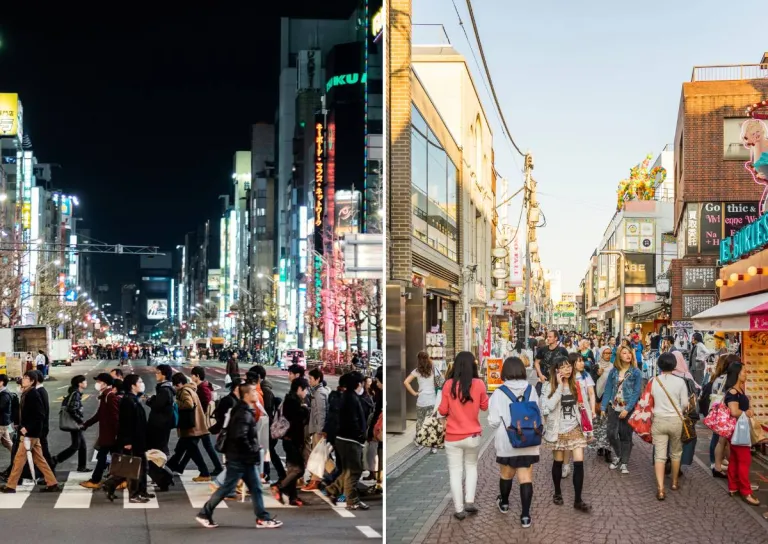Our favourite places to stay on this sleepy Cebu island.
Japan Foreign Residents Surge Hit Record High Amid Citizen Decline

Japan is witnessing a significant demographic shift as the number of foreign nationals living in the country has reached a record high, according to official data released on 24 Jul 2024. This increase coincides with the largest-ever yearly drop in Japanese citizens, reflecting the nation's ongoing struggles with low birth rates and an ageing population.
Also read: Japan’s Overtourism: Is It a Double-Edged Sword?
Everything there is to know about the Japan foreign residents surge

As of 1 Jan 2024, there were 3.32 million foreign residents in Japan, marking a notable rise. These foreign nationals now account for approximately 2.7% of Japan’s total population of 124.9 million. The increase is largely attributed to the lifting of pandemic-era border controls, which saw the return of international students and workers participating in the government’s vocational training scheme.
Conversely, the number of Japanese citizens residing in the country has dropped to 121.6 million, with a decrease of 861,237 in 2023. This marks the largest decline ever recorded and the 15th consecutive yearly drop. With chronically low birth rates, Japan holds the title of the world’s second-oldest population, following only Monaco.
Prime Minister Fumio Kishida has acknowledged the gravity of the situation and has introduced policies aimed at boosting the birth rate. He has warned that the country is “on the verge of whether we can continue to function as a society” and has emphasised the critical need to address this demographic crisis. Kishida’s administration is also reviewing immigration policies to make Japan a more attractive destination for overseas workers, which is seen as a vital step in counteracting the declining native population.
Japanese media have highlighted that the recent rise in foreign residents is a direct result of the relaxation of pandemic-related restrictions. This has allowed the return of international students and professionals who are vital to various sectors within the country. Additionally, the government’s efforts to streamline and enhance its vocational training programs have made it easier for foreign nationals to integrate and contribute to the workforce.
Addressing challenges
The data underscores the urgency with which Japan must address its demographic challenges. The ageing population and low birth rates are compounded by the steady decline in the number of Japanese citizens. This demographic trend poses significant risks to the country’s economic stability and social fabric.
In response, the Japanese government is not only focusing on increasing birth rates but also on creating a more welcoming environment for foreign nationals. This includes reviewing immigration policies and enhancing support systems for international residents.
Also read: New Requirements for Multiple-Entry Japanese Visa 2024
As the government navigates Japan’s foreign resident’s surge, the country's ability to adapt and integrate foreign nationals into its society will be crucial. The increase in foreign residents presents both challenges and opportunities for Japan as it seeks to maintain its economic vitality and social cohesion in the face of a declining native population.
Published at
About Author
Anne Mercado
Subscribe our Newsletter
Get our weekly tips and travel news!
Recommended Articles
10 Bantayan Island Resorts, Hotels, and Rentals for Your Tropical Escape 10 Best Mountain Cafes in the Philippines for Your Peak Coffee Experience Coffee date on the mountains, anyone?
10 Best Things to Do in Los Angeles Los Angeles is more than Hollywood stars. From hikes with killer views to beaches straight out of a rom-com, here are 10 must-do LA experiences for Filipino travellers or any wanderers in general!
10 Cutest Cafes in Japan That Are Totally One of a Kind From Pikachu snacks to Totoro cream puffs, here are 10 themed cafes in Japan that prove café hopping should be part of your travel itinerary.
10-day Christmas and New Year Japan Trip: Complete Travel Itinerary Celebrate Christmas and New Year in Japan with this 10-day holiday vacation itinerary packed with Tokyo lights, Kyoto charm, and Osaka adventures.
Latest Articles
Boracay, Palawan, Siargao Named Among Asia’s Top Islands in 2025 Yes, our islands are still killing it!
Nadine Lustre Denies Links to Siargao Coral Reef Destruction Why is a famous Filipina actress being linked to Siargao’s reef destruction?
The Tragic Tale of Thailand’s Turtle Who Swallowed Coins for Luck A turtle’s survival story
The 4 Big Projects That Could Transform Manila Into a Modern City Are we soon getting the city of our dreams?
Bryan Adams Manila Concert Guide 2026, Tickets, Travel Tips Complete guide for Bryan Adams fans

